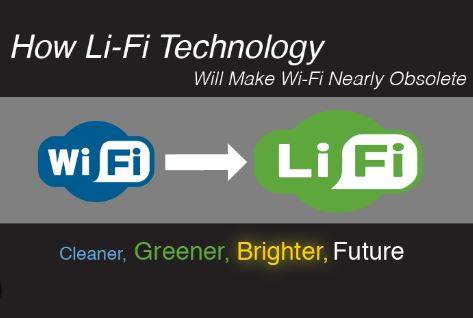The light device is 100 times faster than Wi-Fi, or "the equivalent of downloading 18 HD movies every second."
TechPowerUp reports that the Institute of Electrical and Electronics Engineers has certified 802.11bb as a standard for "light-based wireless communications," known as "Li-Fi." This certification "provides a globally recognized framework for LiFi technology deployment," say Li-Fi tech companies PureLiFi and Fraunhofer HHI.
Li-Fi, introduced in 2011, is short for "Light Fidelity." It literally uses visible, infrared, or ultraviolet light instead of radio frequencies for high-speed data transmission. Li-Fi uses special LED light bulbs installed in houses and offices as routers.
Since light travels faster than Wi-Fi radio waves, data speeds are significantly faster. How much faster? Speeds up to a ridiculous 224GB/s are promised by Li-Fi companies, or "the equivalent of downloading 18 HD movies every second." According to the Li-Fi site, the speeds are "due to the fact that the visible light spectrum is 1,000 times larger than the RF spectrum, which is only about 300 GHz."
According to one of the biggest Li-Fi companies, Fraunhofer, Li-Fi can benefit AR/VR and gaming with "very low latency." The more practical applications for Li-Fi would be for businesses, schools, hospitals, or any other organization that requires fast, reliable, and, most importantly, secure wireless internet.

Light can't penetrate walls like radio waves, which is both a downside and an advantage for Li-Fi. It means you need a Li-Fi-equipped LED bulb in the room you want to use it in. Fraunhofer says this will "reduce jamming and eavesdropping risks" since the data transmission range is limited to the light coverage area, making it difficult to hijack the signal without being physically present in the same room.
Li-Fi companies answer other questions on the standard's official site. As to whether sunlight will interfere, they say that "modulated light is still detectable even under overly bright conditions, such as daylight." And if you want to use Li-Fi in a dark room, well, you can't quite do that, but it apparently works under 10% room illumination. Somewhat surprising is that your device doesn't need line of sight with the Li-Fi bulb, as it can "pick up signals from light bouncing off other surfaces," although the signals may be degraded. We'll test it for ourselves.
Allistair Banham, the CEO of pureLiFi, considers Li-Fi a "complementary and additive solution to [radio frequency] communications." The adoption of 802.11bb could mean we'll start seeing consumer Li-Fi products in the near future, as Fraunhofer says the standard addresses "mass-market requirements" for Li-Fi products
Now that the standardized standard is out there, companies can start rolling out Li-Fi devices like PureLifi's Light Antenna One. The company bills the tiny device as a quicker and safer alternative to Wi-Fi for secure tasks that require enormous amounts of bandwidth and says it's nearly ready for mass production. We have no idea yet how much it will cost.
Source: pcgamer


